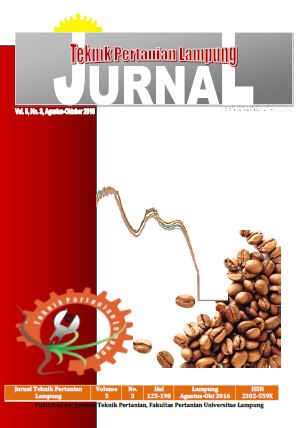PENGARUH KONSENTRASI PEREKAT TEPUNG TAPIOKA DAN TANAH LIAT TERHADAP MUTU BRIKET BATU BARA
Abstract
Making coal briquettes require tapioca glue and clay. The purpose of this research is studying the effect of
concentration tapioca glue and clay to characteristic coal briquette. Research carried out by treatment with a
concentration of starch, clay and coal flour respectively as follows; a) 2%, 18%, 80%, b) 4%, 14%, 82%, c) 6%,
10%, 84% and d) 8%, 6%, 86%. The results are showed that the density of coal briquettes are not affected by the
concentration of glue material, but it is influenced by the pressure of the tool at the time of manufacture. The lower
the content of clay in the briquettes, the stronger the briquettes were produced and the lower the number of
briquettes were broken when dropped at a height of 2 m. The higher the clay content of the briquettes, so the time
for the initial combustion, the temperature of the plate surface reached 180 °C and the duration of briquette
became ashes are longer. The rate of combustion of coal briquettes are made lower than the rate of briquettes
combustion from briquettes non carbonization and carbonization
Key word : coal briquette, tapioca, clay, start up combustion dan carbonisation
Downloads
Published
Issue
Section
License
- Authors who publish with this journal agree to the following terms:
- Authors retain copyright and grant the journal right of first publication with the work simultaneously licensed under a Creative Commons Attribution-ShareAlike 4.0 International Lice that allows others to share the work with an acknowledgement of the work's authorship and initial publication in this journal.
- Authors are able to enter into separate, additional contractual arrangements for the non-exclusive distribution of the journal's published version of the work (e.g., post it to an institutional repository or publish it in a book), with an acknowledgement of its initial publication in this journal.
- Authors are permitted and encouraged to post their work online (e.g., in institutional repositories or on their website) prior to and during the submission process, as it can lead to productive exchanges, as well as earlier and greater citation of published work (See The Effect of Open Access).
Jurnal Teknik Pertanian Lampung

JTEPL is licensed under a Creative Commons Attribution-ShareAlike 4.0 International License.

